The views expressed in our content reflect individual perspectives and do not represent the official views of the Baha'i Faith.
My quest to understand the Baha’i Faith – and to understand whether I wanted to actually become a Baha’i – followed me from California’s Mojave Desert to forests of Europe.
By my fifteenth year, my mother and I had moved to Germany and found ourselves living in a little village named Sembach in the Bundesland part of Rheinland-Pfalz near the city of Kaiserslautern.
What a change from the Mojave Desert! The shady strolls along the leaf-strewn paths through the dark Pfälzerwald forests and grassy meadows made quite a contrast with the sandstorm-swept treks we had previously made across expanses of desert, randomly dotted by the occasional cholla cactus and Joshua tree.
In the three years since I first began reading about Baha’u’llah, we had not only moved to Europe, but we had also visited many places within the United States, meeting Baha’is from other cultures. We met the Navajo Baha’is of Pine Springs, Arizona, when they invited Indians and non-Indians alike from all over the world to join them in a week-long conference and cultural festival that announced the coming of Baha’u’llah to the entire tribe. My mother and I went. Looking back, I think that week of listening to the fulfilled ancient prophecies of the Indians sparked my lifelong interest in anthropology.
Two weeks after my fifteenth birthday, Baha’is from around the world began to arrive in a small town called Langenhain on a hill overlooking Frankfurt, just a few hours’ drive from our home in Sembach near the French border. Langenhain had been chosen some years before as the site of the first Baha’i House of Worship in Europe. An elegantly beautiful nine-sided temple had been constructed, open to all people and symbolizing the unity of the world’s religions. It was to be dedicated on the 4th of July, 1964, and I chose that day to declare my faith in Baha’u’llah and register as a Baha’i.
When my mother and I arrived, there were already more than a thousand people present. I had never seen such a diverse gathering. Every continent and scores of countries were represented by Baha’is from every race and of every color. They greeted each other as friends and associated without reticence or prejudice. It was then that I began to understand the central Baha’i teaching of unity in diversity:
Praise be to God, today the splendour of the Word of God hath illumined every horizon, and from all sects, races, tribes, nations, and communities souls have come together in the light of the Word, assembled, united and agreed in perfect harmony. Oh! What a great number of meetings are held adorned with souls from various races and diverse sects! Anyone attending these will be struck with amazement, and might suppose that these souls are all of one land, one nationality, one community, one thought, one belief and one opinion; whereas, in fact, one is an American, the other an African, one cometh from Asia and another from Europe, one is a native of India, another is from Turkestan, one is an Arab, another a Tajik, another a Persian and yet another a Greek. Notwithstanding such diversity they associate in perfect harmony and unity, love and freedom; they have one voice, one thought and one purpose. Verily, this is from the penetrative power of the Word of God! If all the forces of the universe were to combine they would not be able thus to gather a single assemblage so imbued with the sentiments of love, affection, attraction and enkindlement as to unite the members of different races and to raise up from the heart of the world a voice that shall dispel war and strife, uproot dissension and disputation, usher in the era of universal peace and establish unity and concord amongst men. – Abdu’l-Baha, Selections from the Writings of Abdu’l-Baha, p. 292.
It is one thing to read about a principle which says that unity in the world is only achievable if the individual races and cultures are appreciated, but quite another to see it in practice. The dedication ceremony was uplifting and simple. Bahai prayers were read in German, Persian, English, Swedish, French and Spanish; as were passages from the holy scriptures of various religions, the Old and New Testaments, the Bhagavad Gita, and the Qur’an.
In the afternoon, when the dedication ceremony was complete, and people began their journeys home, I found a quiet spot beside the House of Worship and wrote a note to the Baha’i Centre in Frankfurt-am-Main that I wished to become a Baha’i. Since that day more than fifty years ago, I have been a Baha’i. As a story about finding the truth and embracing a new religion, this is perhaps less dramatic than many I have heard. However, the process of personal transformation which resulted from studying the teachings of Baha’u’llah was just as profound for me as for those whose lives were salvaged from destruction by becoming Baha’is.
Soon after the dedication of the Baha’i House of Worship, my mother and I moved back to California. In the time we had been away, the Baha’i Faith had grown substantially. Many people were doing what my mother and I had done: seriously investigating the Baha’i teachings.
By now, there were many more people of my own age who had somehow met a Baha’i or had read a book by Baha’u’llah and had become Baha’is themselves. Because we were young, we automatically gravitated together. In the midst of the hedonism of the hippie movement and the demonstrations against the war in Vietnam, our group of Baha’i youth did what we could to solve some of the social ills of the times by telling others about the progressive principles from the teachings of Baha’u’llah – universal peace, racial unity, gender equality, the harmony of science and religion. Some people listened. Every weekend we hosted meetings to which we invited our classmates and friends to discuss how to overcome the obstacles which stood in the way of achieving peace and unity in the world. Some towns now had Baha’i Centers where we could meet but, where the Baha’i community was still small in numbers, we met in each other’s homes.
It is much the same today, although many more Baha’i Centers exist and many more Baha’i homes host people who gather to pray, read from the writings of Baha’u’llah, discuss the issues at hand, and enjoy the fellowship of each other. The place where Baha’is meet is not important. Baha’u’llah reminded us that:
Blessed is the spot, and the house, and the place, and the city, and the heart, and the mountain, and the refuge, and the cave, and the valley, and the land, and the sea, and the island, and meadow where mention of God has been made, and His praise glorified. – Baha’u’llah, Baha’i Prayers, p. iii.
I have good memories of those times. The friends I made when I was young are now grown up and scattered all over the globe. It is the same for me as I now live in the medieval walled-city of Trnava, in western Slovakia. Except for Baha’i conferences, I rarely see my old friends now. Just as I have decided to be an anthropologist, so they have all chosen professions in which they can find ways to use their talents to serve humanity. They are farmers, ecologists, teachers, biologists, physicists, social workers, doctors, journalists, and above all, parents. They bring up their children to love humankind, and by example teach them to treat each other with equality and justice. They are putting into practice the Baha’i way of life.
Now, wherever my anthropological work takes me in the world, I meet a new generation of Baha’is who carry on the responsibility of promoting an ever-advancing civilization. Whenever I am close enough I try to visit a Baha’i House of Worship. There are now many more in the world. To date there are continental Houses of Worship located in: Wilmette, Illinois, USA; Kampala, Uganda; Langenhain near Frankfurt, Germany; Sydney, Australia; Apia, Samoa; Panama City, Panama; New Delhi, India; and Santiago, Chile. Other national and local Houses of Worship are also being built.
Our friend Lucille Jordan passed away a few years ago, a Baha’i who truly loved Baha’u’llah and who served humanity in her day-to-day work among the poor and needy. I am very grateful for the role she and my mother played in my becoming a Baha’i. Although Lucille was not a relative, she was a kind of spiritual ancestor in a continuum of people who discovered the teachings of Baha’u’llah and passed the knowledge on to others like me. After all these years, it is humbling to be asked to write books about the Baha’i Faith, which may themselves be lent to others like the books she lent to me.
This series of essays is adapted from Joseph Roy Sheppherd’s book The Elements of the Baha’i Faith, with permission from his widow Jan Sheppherd.


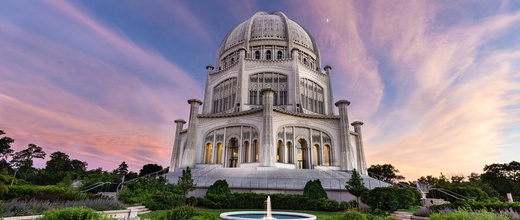








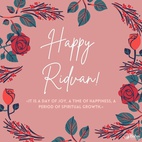

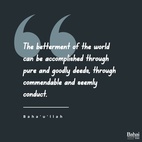
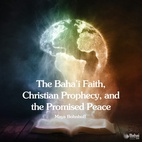
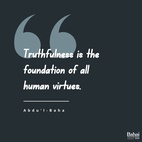

Comments
Sign in or create an account
Continue with Facebookor